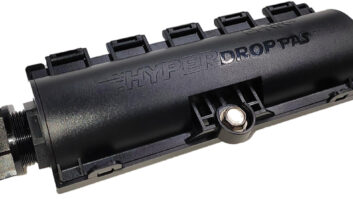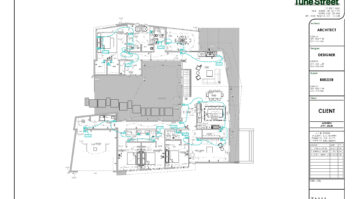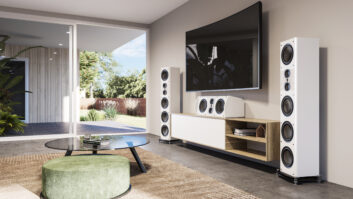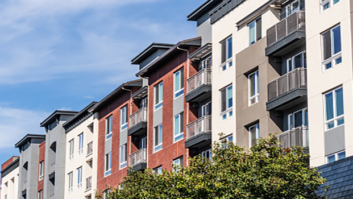Last month, I ranted about how fiber optics has yet to take hold in the custom audio/video world. OK, so be it. I know that fiber is tricky to terminate. You cant strap it to the front-end winch of your pickup to pull it through tight conduit, and it sure as heck isnt crazy about soldering irons and punch-down blocks when it comes to mending those fiber strands that the winch broke. Despite its difficulties of usage, however, there are a multitude of problems that warrant such encumbrances.
For starters, there cant be many around who have not tackled the great audio demon conjured up under the moniker of bad grounding. There is an entire mystical art in the design and implementation of the elusive technical grounding structure referred to as the isolated audio ground. Books have been written, careers launched and legions of technicians sacrificed in this quest for the holy audio ground. And even once understood, it is most likely to be virtually impossible to enforce on older installations that cover multiple building zones of varying ages, where grounding practices were either never enforced or hardly envisioned. In such installations, the problems created by combining their grounds together may be insurmountable.
A quick and reliable first solution should be to consider fiber optics for this grounding issue, and not wait until other attempted solutions have failed and the installation is in turmoil over unacceptable audio noise. To understand how fiber applies, lets first understand what the isolated audio ground really is attempting to achieve.
To have perfectly clear, quiet, noise-free audio signals, all audio components such as amplifiers, buffers, speakers and wiring need to have quiet, solid ground paths. Balanced audio wiring works toward this goal by saying that any noise on both wires is ignored. Unfortunately, any noise coming in on the ground for that balanced device can, and does, get introduced right back into the audio signal by the device itself, regardless of the balanced wiring. This noise comes from sources other than the nice clean audio components, such as LAN hubs, fluorescent lamps, air conditioners, AC power strips lying too close to audio cables, digital processor controllers, etc.
The theory goes that having all of those noisy devices on a ground path all to themselves allows their noise to return to earth ground, and keeps them from getting introduced into those nice, quiet audio components. The basic problem here is that audio coming from these noisy components has to get transferred over to the quiet audio components for processing and ultimately listening. This is almost always achieved with copper wiring, using balanced Category wire or coaxial cable. Such copper connections still require electrons to flow between the two types of devices and noise still has its path (over the ground electrical return wiring). So eliminate the copper path, and you eliminate the noise path.
Using fiber optics instead to transfer the audio from the noisy multiplexers over to the quiet audio sections would inherently eliminate the electrical return path, thereby eliminating the noise. Yes, it costs more for the fiber transmitters and receivers, so its definitely not required in all installations. But configurations that necessitate greater-than-normal distances between source and destination should be examined first for fiber usage, and not be relegated to the well look at that when we have a problem domain.
By allowing each of these separate digital control and audio processing areas to remain on their own grounding domains, the designer avoids any and all pitfalls that may lay in waiting. All too often, however, we revert to the old tried and true methods of copper and coax, because we understand them better.
Local audio and video distribution utilizing Cat-5/6 UTP cabling has become quite the common practice and is unarguably highly successful. But even Category wires have trouble with extremely noisy fluorescent light ballasts and heavy-duty air conditioning motors. Fiber doesnt care about either of these, and needs to be considered during the design phase.
A variation on this grounding problem theme is exemplified in older high-rise buildings where the grounds for each floor were daisy-chained one after another, each floors connection adding increased voltage across these connections into the local grounding plane. By the time one reaches the upper floors, the difference in ground on any given upper floor to that of the basement true earth ground is commonly several volts, and routinely hits 10-20 volts. In a world where audio imbalances are measured in millivolts, this cannot be ignored. We would all do well to avoid such problematic connections. Similar grounding conditions routinely occur in sites with multiple smaller buildings spread out across a large physical site. By routing the transfer of audio from area to area, or floor to floor via fiber optics instead of copper, these differences in ground potentials become totally irrelevant, and the audio remains noise free.
And how about outdoor or wet environment locations, such as in-pool speakers and surround sound, wide-screen spa products? Again this is a perfect place for fiber. Many of the new security systems are deploying fiber in their outdoor products for this very reason, along with fibers inherent resistance to tapping into or bypassing.
These are but a few of the more easily recognizable applications for fiber optics. There can be no doubt that they are harder and therefore more costly to deploy, but why do we continue to design and implement copper solutions into situations that we can readily identify as highly probable problematic conditions? Whatever it is, fiber isnt going to sit around waiting for you to adopt it. It will find another sponsor, mostly likely your competition. So why risk it? Deploy a few fiber strands next time and avoid that headache youre going to receive trying to eliminate the audio noise later on.







